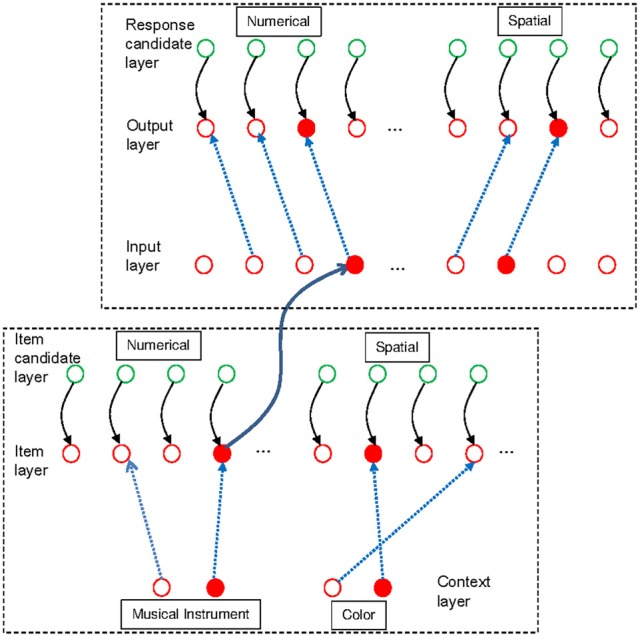Figure 8.

Model architecture applied to the dual-operation condition of the experiment of Oberauer and Bialkova (2011). As in Figure 2, the bottom-left frame surrounds the item-selection module of declarative working memory, and the upper-right frame encloses the response-selection module of procedural working memory. Each layer in both modules is separated into two sub-layers: The context layer consists of two units representing musical instruments, and two units representing colors. The musical instruments are connected to nine item units representing digits (only four of which are shown), and the color units are connected to nine item units representing dot locations (only four shown). The input and output layers of the response-selection module are analogous to the item layer. The figure shows the state of the model after completion of one updating step. One musical instrument and one color have been activated in the context layer. These activations have been forwarded to the item layer through the declarative binding matrix, which binds one digit to each musical instrument, and one location to each color. The retrieved digit activates the corresponding digit, and the retrieved location activates the corresponding location, in the input layer of the response-selection module. The procedural binding matrix is configured to carry out the required arithmetic updating operation (subtract one) in the numerical sub-module, and the required spatial updating operation (shift to the right) in the spatial sub-module. The activation in the input layer is forwarded through these bindings to the output layer, resulting in the selection of a new digit and a new location.
